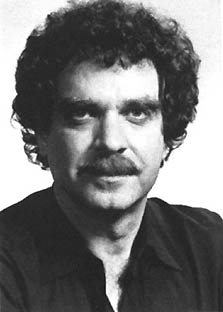
Image explaining a new technology that allows a computer to reconstruct images from blood flow in the brain. Source: ChunichiWEB
I just found a very interesting blog post on The Pink Tentacle. Apparently Japan based ATR Computational Neuroscience Laboratories announced on December 11th that they have developed a method of brain analysis that uses an MRI scanner to detect the flow of blood in the brain and in turn reconstruct images that are being seen by the brain.

The shapes on the top are the original images shown
to participants to establish a data set.
The letters on the bottom, previously unused,
were reconstructed from the blood flow
in the brain. Source: ChunichiWEB
One of the exciting aspects of this research is that it does not seem to completely rely on 'parroting.' That is, subjects were shown 10x10 pixel images while being scanned which provided a data set based on the original images. But then the subjects were scanned while looking at previously unused 10x10 pixel images and the machine was able to decipher the new imagery in a recognizable way.to participants to establish a data set.
The letters on the bottom, previously unused,
were reconstructed from the blood flow
in the brain. Source: ChunichiWEB
Apparently the researchers working on this recognize that the technology can be applied in the fields of art and design, which was my first thought. Just imagine if we could see into shapes and images running through Pollock's mind? Let alone the conceptual work that can be done with this type of interface. There is also the suggestion from the researchers that the technology might aid in the therapy of those who suffer hallucinations or other psychiatric disorders.
The researchers suggest that in around 10 years, with increased sensitivity in their sensors, this type of technology has the potential to allow a machine to read not only the imagery in our heads, but all of our senses and emotions into meaningful information that can be displayed on a computer screen. While the artistic applications this kind technology offer is exciting, it seems as though there are some serious privacy issues invovled with this as well. Indeed, what would it mean if waterboarding was replaced by forced brain analysis?
You can find the research article written by the people behind this technology in the December 10 issue of the US based science journal Nuron.
"Canst thou not minister to a mind diseased;
Pluck from the memory a rooted sorrow;
Raze out the written troubles of the brain;
And, with some sweet oblivious antidote,
Cleanse the stuffed bosom of that perilous stuff
Which weighs upon the heart?"
Shakespeare, Macbeth - Act v. Sc. 3
Pluck from the memory a rooted sorrow;
Raze out the written troubles of the brain;
And, with some sweet oblivious antidote,
Cleanse the stuffed bosom of that perilous stuff
Which weighs upon the heart?"
Shakespeare, Macbeth - Act v. Sc. 3




